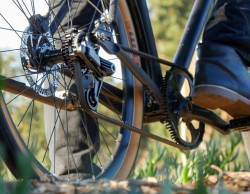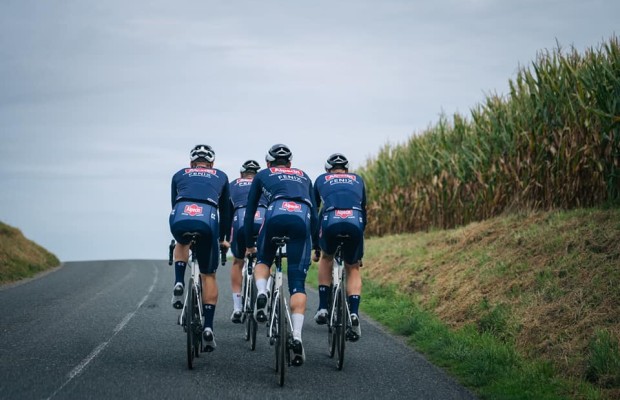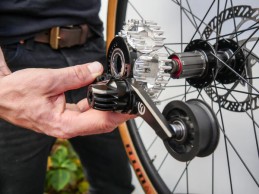This futuristic shift system is already a reality
Veer presents the revolutionary Shift Drive system to combine for the first time belt transmission with gear shifting. The Californian brand aims to bring together the best of both worlds and offer a solution that focuses on urban bikes. The invention enters the market as an efficient proposal, with good performance and easy to repair.

Shift Drive: the engineering behind an ambitious change that brings it all together
The transmission -and all the components that make it up- are subject to constant inventions and reinventions as a result of the permanent evolution in which the cycling industry lives. The traditional chain-chainring-cassette system dominates the market with authority, although in some segments it is common to find internally housed gears. Belts are another piece of the equation: with notable advantages over chains, but incompatible with chainrings and cassettes.
Veer now raises the flag of the solution and proposes for the first time a transmission that combines belt and external gear shifting by cogs. The goal pursued by the American firm is to bring together the best of each of them to offer a single system that eliminates the drawbacks associated with each of the current options.
RECOMENDADO

What would you do if you won the lottery? This cyclist bought himself a €20,000 bike

The best exercise routine to do at home

Benefits of training in the cold

The cyclist's patience: how long, gentle training sessions build your best season

Tips for cycling in the rain

25 cycling gifts ideas to get it right

Belts are lightweight, silent, and require almost no maintenance. All these attributes place them one step ahead of chains, although incompatibility with chainrings and cassettes eliminates all the advantage and forces them to have a much more limited presence in the market. In this way, until now belts could only be installed with internal gears, which offer interesting advantages but also entail some disadvantages.
Internal gears are more reliable and durable, require less maintenance than traditional ones, and allow for gear changes while stationary; but -except for high-end products- they weigh more, are less efficient in energy transmission, and are more expensive and complex. In addition, gear hubs prevent the use of hub motors in electric bikes.

Veer's Shift Drive attacks head-on to solve the problem: since belts are unable to shift gears because they have little lateral friction -they must always be properly aligned-, the solution lies in moving the cogs. Let's break it down.
The system is divided into six moving and independent pieces that form the crown to which the belt attaches. The transmission has two speeds: in a synchronized movement, each piece moves 180 degrees and, upon turning, the belt engages another piece -the same one actually, but on the other side and with a different size-. In this way, gear changes are achieved while keeping the belt stable.
The pieces have four teeth on one side and seven teeth on the other. You can see how it works in the following video.
Thus, Veer achieves a system with several advantages, according to the brand's own version. First, the aluminum used to manufacture most parts reduces the weight by 75% compared to most internal gear hubs. The lower complexity of the design may be of interest to the industry, as it makes them a simple offer to produce and repair.
They also claim that the moving parts are protected from the weather, which reduces maintenance. Veer emphasizes compatibility, the good performance of its system when pedaling with force, and the good response to typical torque pairs of electric bikes.

On the other hand, they admit that the two speeds may be insufficient for some users and state that "the first systems are mainly optimized for urban use" and suggest that they could also work well on urban electric bikes. However, they explain that they expect to launch systems with more speeds soon.
Veer has not provided details on the price, but has simply stated that it will be comparable to the most popular low-end gear hubs.